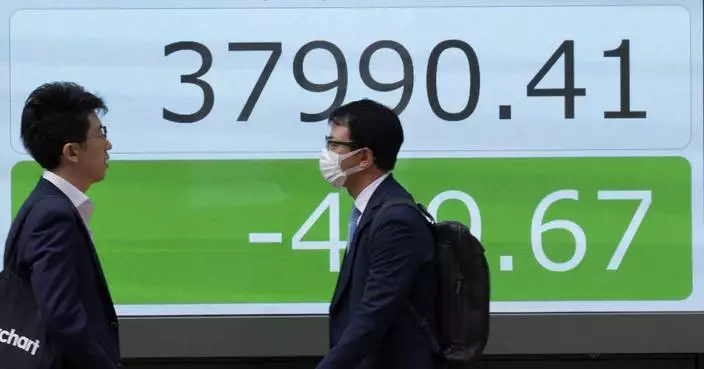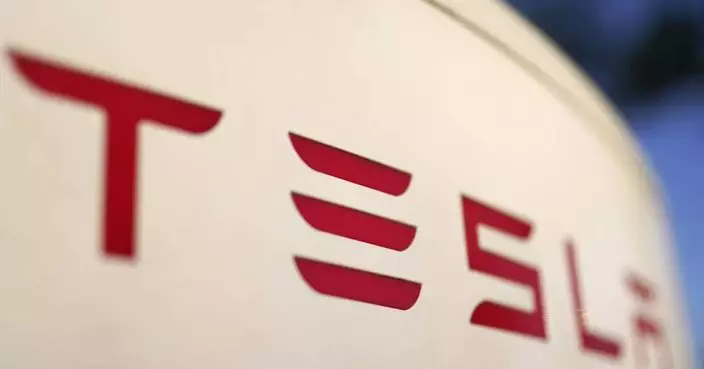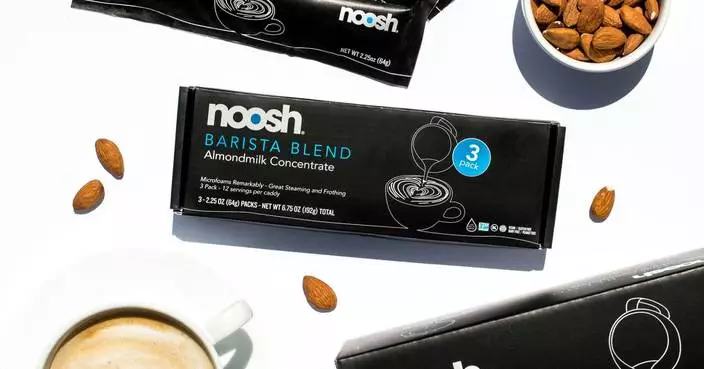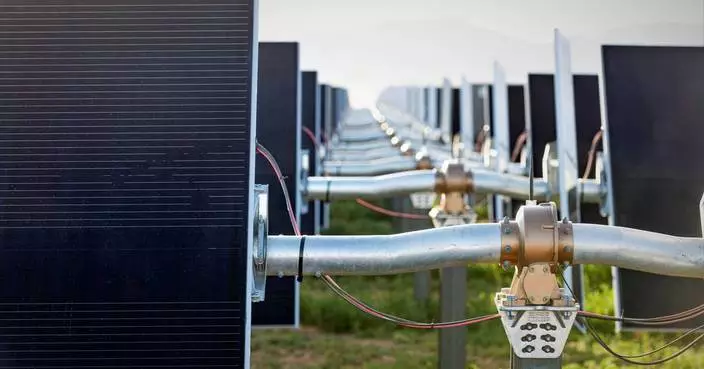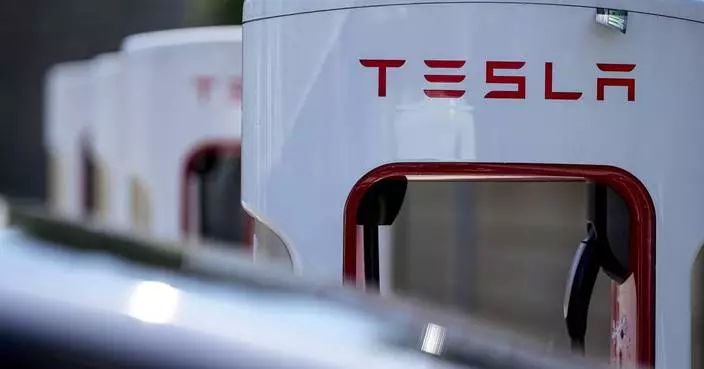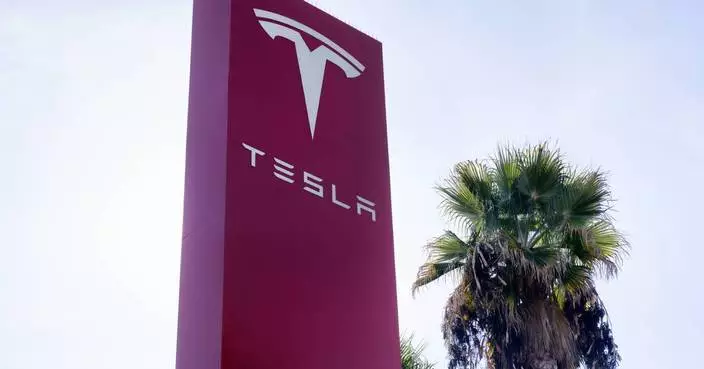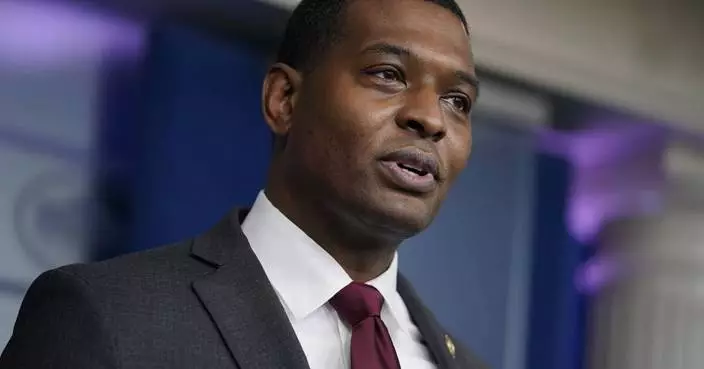Take a ride!
SpaceX unveiled its new Falcon Heavy rocket a month before its first launch. SpaceX chief executive Elon Musk said the Falcon Heavy will launch his own cherry-red Tesla Roadster into space.
Click to Gallery
This photo made available by SpaceX on Wednesday, Dec. 20, 2017 shows the new Falcon Heavy rocket in a hangar at Cape Canaveral, Fla. It is scheduled for a test flight in January 2018. (SpaceX via AP)
First, SpaceX will test-fire the rocket's 27 engines at the pad; the company is aiming to do that by the end of the month. The launch is planned for a few weeks after the test.
Musk has repeatedly warned there's a good chance the new rocket could blow up, thus his own personal property will be aboard. He heads up the Tesla electric car company, as well as SpaceX and several other companies.
The Falcon Heavy will be minus its featured load for the test. That's been customary ever since a Falcon 9 exploded during a 2016 practice engine firing, destroying both rocket and satellite.
This photo made available by SpaceX on Wednesday, Dec. 20, 2017 shows the new Falcon Heavy rocket in a hangar at Cape Canaveral, Fla. It is scheduled for a test flight in January 2018. (SpaceX via AP)
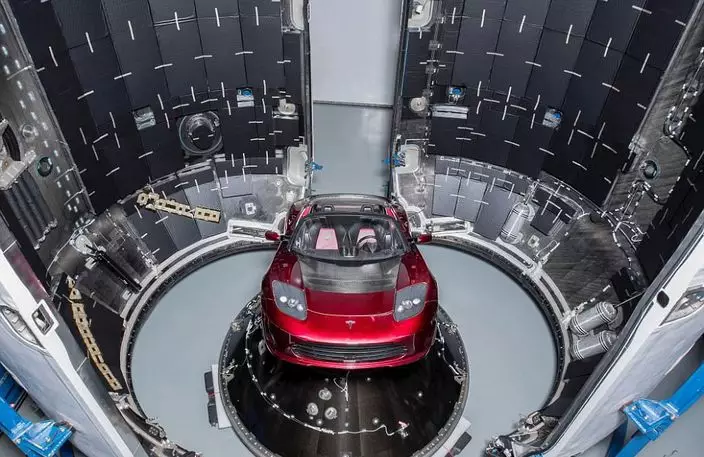
Photo via Twitter@SpaceX
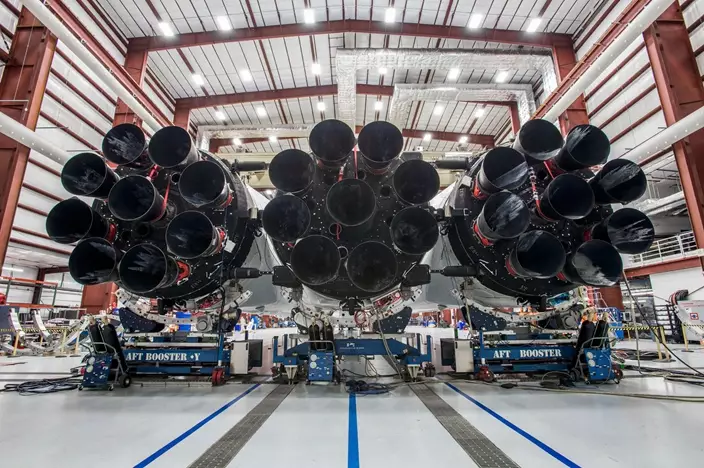
This photo made available by SpaceX on Wednesday, Dec. 20, 2017 shows the new Falcon Heavy rocket in a hangar at Cape Canaveral, Fla. It is scheduled for a test flight in January 2018. (SpaceX via AP)
First, SpaceX will test-fire the rocket's 27 engines at the pad; the company is aiming to do that by the end of the month. The launch is planned for a few weeks after the test.
Falcon Heavy is essentially the company's Falcon 9 times three. It features three Falcon 9 first-stage boosters joined together with a second-stage on the middle one. It also has three times more engines.
The Falcon 9 is now used to hoist satellites and supplies to the International Space Station. The Heavy is intended for super-big satellites, as well as cargo destined for points far beyond, like Mars.

This photo made available by SpaceX on Wednesday, Dec. 20, 2017 shows the new Falcon Heavy rocket in a hangar at Cape Canaveral, Fla. It is scheduled for a test flight in January 2018. (SpaceX via AP)

Photo via Twitter@SpaceX
Musk has repeatedly warned there's a good chance the new rocket could blow up, thus his own personal property will be aboard. He heads up the Tesla electric car company, as well as SpaceX and several other companies.
If all goes as planned, Musk's Roadster will wind up in a long, elliptical orbit around the sun, stretching as far out as the orbit of Mars. He laid out the jaw-dropping plan in a series of tweets earlier this month. Last week, a SpaceX manager said the company will meet all necessary government requirements.
"I love the thought of a car drifting apparently endlessly through space and perhaps being discovered by an alien race millions of years in the future," Musk wrote.
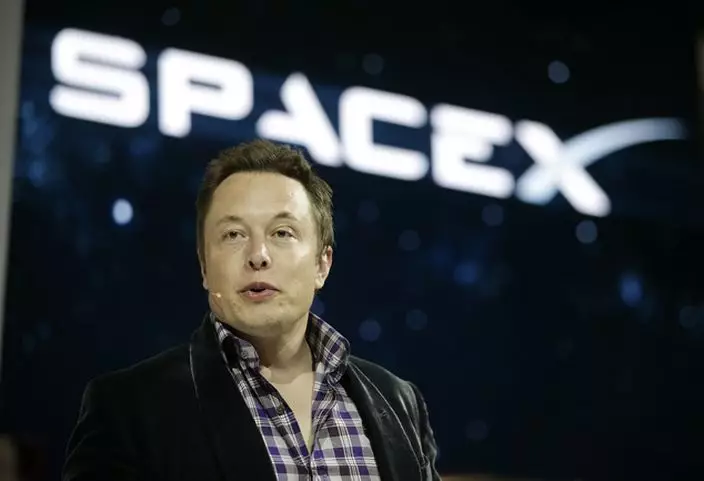
Elon Musk (AP Photo/Jae C. Hong, File)
The Falcon Heavy will be minus its featured load for the test. That's been customary ever since a Falcon 9 exploded during a 2016 practice engine firing, destroying both rocket and satellite.
The Falcon Heavy will have double the thrust of the next biggest rocket out there today, according to Musk. "Guaranteed to be exciting, one way or another," he promised.
SpaceX advertises that the Falcon Heavy will be able to lift 140,660 pounds of cargo to low-Earth orbit, 37,040 pounds to Mars, and 7,720 pounds to Pluto.
NASA's Saturn V moon rocket, used during the late 1960s and early 1970s, will still top the charts. But none of it was reusable. NASA introduced reusability with its space shuttles in 1981, reflying the orbiters as well as booster segments and main engines until their retirement in 2011.
SpaceX has paved the way for rocket reusability on the commercial side of orbital flight. Two of the Heavy's three first-stage boosters have flown before. After blasting off from NASA's historic Launch Complex 39A at Kennedy Space Center, all three will attempt vertical landings, two on land and one on a floating offshore platform.
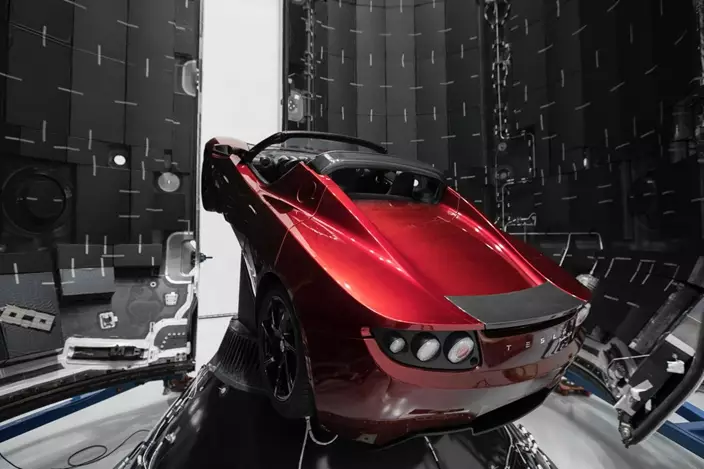
Photo via Twitter@SpaceX

Photo via Twitter@SpaceX
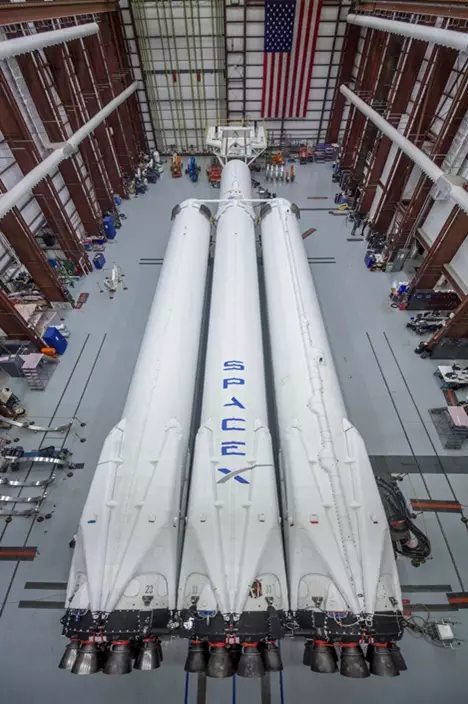
This photo made available by SpaceX on Wednesday, Dec. 20, 2017 shows the new Falcon Heavy rocket in a hangar at Cape Canaveral, Fla. It is scheduled for a test flight in January 2018. (SpaceX via AP)
SpaceX is working on an even bigger rocket that would replace the Falcon line.
NASA is also working on a megarocket, the Space Launch System or SLS. So is United Launch Alliance, a venture between Lockheed Martin and Boeing, with its next-generation Vulcan.
DETROIT (AP) — The U.S. government's auto safety agency is investigating whether last year's recall of Tesla's Autopilot driving system did enough to make sure drivers pay attention to the road.
The National Highway Traffic Safety Administration says in documents posted on its website Friday that Tesla has reported 20 more crashes involving Autopilot and since the recall. The crashes and agency tests raised concerns about the effectiveness of the remedy. The recall involved more than 2 million vehicles, nearly all the vehicles that Tesla had sold at the time.
The agency pushed the company to do the recall after a two-year investigation into Autopilot's driver monitoring system, which measures torque on the steering wheel from a driver's hands. In the probe, the agency was looking at multiple cases in which Teslas on Autopilot ran into emergency vehicles parked on freeways.
The recall fix involves an online software update to increase warnings to drivers. But the agency said in documents that it has found evidence of crashes after the fix, and that Tesla tried to address problems with additional software updates after the recall fix was sent out. The updates may not have worked.
“This investigation will consider why these updates were not part of the recall or otherwise determined to remedy a defect that poses an unreasonable safety risk,” the agency wrote.
A message was left early Friday seeking comment from Tesla.
NHTSA said that Tesla reported the 20 crashes in vehicles that had received the recall software fix. The agency has required Tesla and other automakers to report crashes involving partially and fully automated driving systems.
NHTSA said it will evaluate the recall, including the “prominence and scope” of Autopilot’s controls to address misuse, confusion and use in areas that the system is not designed to handle.
It also said that Tesla has stated that owners can decide whether they want to opt in to parts of the recall remedy, and that it allows drivers to reverse parts of it.
Safety advocates have long expressed concern that Autopilot, which can keep a vehicle in its lane and a distance from objects in front of it, was not designed to operate on roads other than limited access highways.
The investigation comes just one week after a Tesla that may have been operating on Autopilot hit and killed a motorcyclist near Seattle, raising questions about whether a recent recall went far enough to ensure Tesla drivers using Autopilot pay attention to the road.
After the April 19 crash in a suburban area about 15 miles (24 kilometers) northeast of the city, the driver of a 2022 Tesla Model S told a Washington State Patrol trooper that he was using Autopilot and looked at his cellphone while the Tesla was moving.
“The next thing he knew there was a bang and the vehicle lurched forward as it accelerated and collided with the motorcycle in front of him,” the trooper wrote in a probable-cause document.
The 56-year-old driver was arrested for investigation of vehicular homicide “based on the admitted inattention to driving, while on Autopilot mode, and the distraction of the cell phone while moving forward, putting trust in the machine to drive for him,” the affidavit said.
The motorcyclist, Jeffrey Nissen, 28, of Stanwood, Washington, was pronounced dead at the scene, authorities reported.
Authorities said they have not yet independently verified whether Autopilot was in use at the time of the crash.
On Thursday, NHTSA ended its investigation of Autopilot, citing the recall and the investigation of its effectiveness. The agency said it found evidence “that Tesla's weak driver engagement system was not appropriate for Autopilot's permissive operating capabilities.”
Tesla, the leading manufacturer of EVs, reluctantly agreed to the recall last year after NHTSA found that the driver monitoring system was defective.
The system sends alerts to drivers if it fails to detect torque from hands on the steering wheel, a system that experts describe as ineffective. Although many newer Teslas have cameras that can watch the driver, they can't see at night, and independent testing shows that Autopilot can still be used even if the cameras are covered.
The Associated Press reported shortly after the recall that experts said the fix relied on technology that may not work.
Research conducted by NHTSA, the National Transportation Safety Board and other investigators show that merely measuring torque on the steering wheel doesn’t ensure that drivers are paying sufficient attention. Experts say night-vision cameras are needed to watch drivers’ eyes to ensure they’re looking at the road.
Michael Brooks, executive director of the nonprofit Center for Auto Safety, said NHTSA is looking into where Tesla allows Autopilot to be used.
The company doesn’t limit its use, even though it was designed to operate on limited access freeways. Tesla, he said, appears to rely on computers to decide whether Autopilot can operate rather than maps that show a vehicle’s location.
“When you hit that point where you're in the area where Autopilot wasn't designed to operate and the car knows it's in that area, why is it still allowed to engage?” he asked.
Brooks said NHTSA could seek civil fines and additional fixes from Tesla.
Government documents filed by Tesla in the December recall say the online software change will increase warnings and alerts to drivers to keep their hands on the steering wheel.
NHTSA began its Autopilot crash investigation in 2021, after receiving 11 reports that Teslas that were using Autopilot struck parked emergency vehicles. In documents explaining why the investigation was ended, NHTSA said it ultimately found 467 crashes involving Autopilot resulting in 54 injuries and 14 deaths.
Tesla offers two partially automated systems, Autopilot and a more sophisticated “Full Self Driving,” but the company says neither can drive themselves despite their names.
In investigative documents, NHTSA said it found 75 crashes and one death involving “Full Self Driving.” It's not clear whether the system was at fault.
CEO Elon Musk for several years has said “Full Self Driving” will allow a fleet of robotaxis to generate income for the company and owners, making use of the electric vehicles when they would have been parked. Musk has been touting self-driving vehicles as a growth catalyst for Tesla since “Full Self Driving” hardware went on sale late in 2015. The system is being tested on public roads by thousands of owners.
In 2019, Musk promised a fleet of autonomous robotaxis by 2020 that would make Teslas appreciate in value. Instead, they’ve declined with price cuts, as the autonomous robotaxis have been delayed year after year while being tested by owners as the company gathers road data for its computers.
Tesla says neither system can drive itself and that drivers have to be ready to take control at all times.
Neither Musk nor other Tesla executives on Tuesday’s earnings conference call would specify when they expect Tesla vehicles to drive themselves as well as humans do. Instead, Musk touted the latest version of “Full Self Driving” and said that “it’s only a matter of time before we exceed the reliability of humans, and not much time at that.”
Musk went on to insist that “if somebody doesn’t believe that Tesla is going to solve autonomy, I think they should not be an investor in the company.”
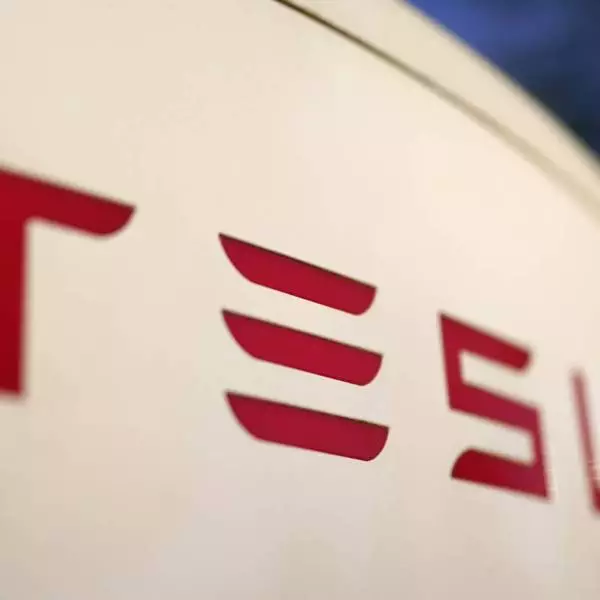
US probes whether recall of Tesla Autopilot driving system did enough to make sure drivers attention
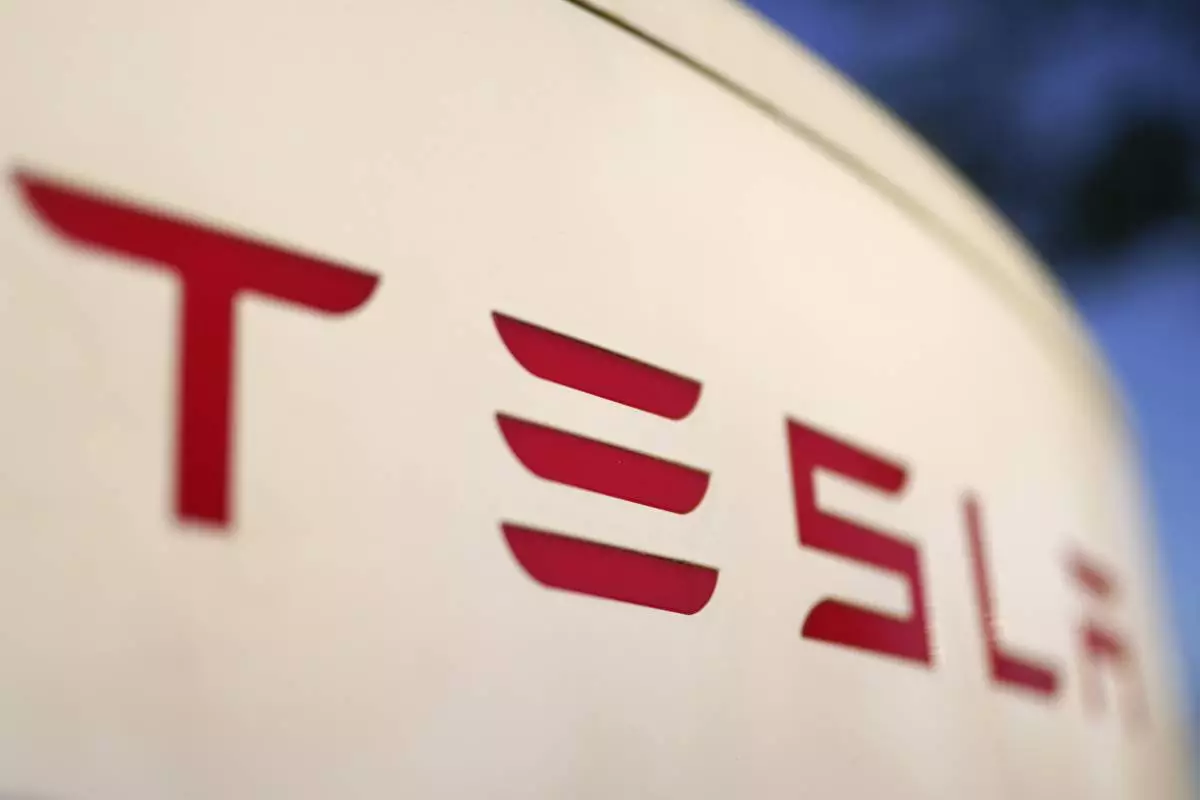
FILE - The logo for the Tesla Supercharger station is seen in Buford, Ga, April 22, 2021. Faced with falling global sales and a tumbling stock price, Tesla has slashed prices again on some of its electric vehicles and its “Full Self Driving” system. Tesla releases first-quarter earnings Tuesday, April 23, 2024. (AP Photo/Chris Carlson, File)
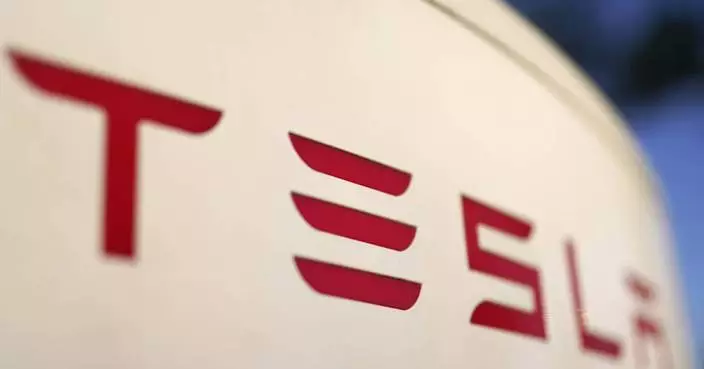
US probes whether recall of Tesla Autopilot driving system did enough to make sure drivers attention














